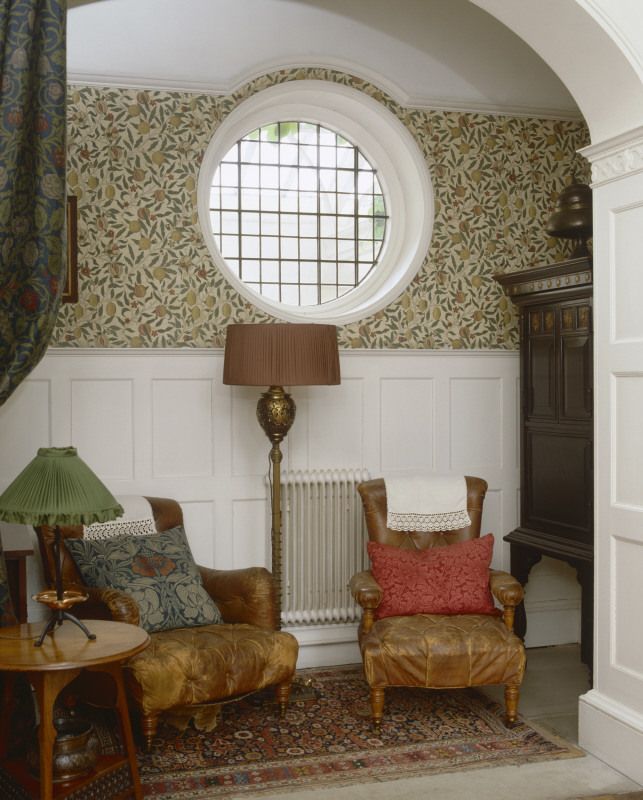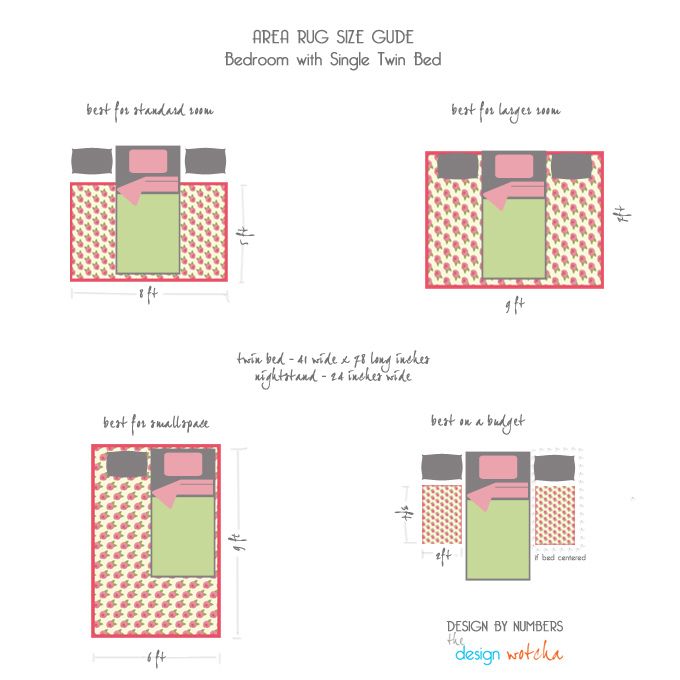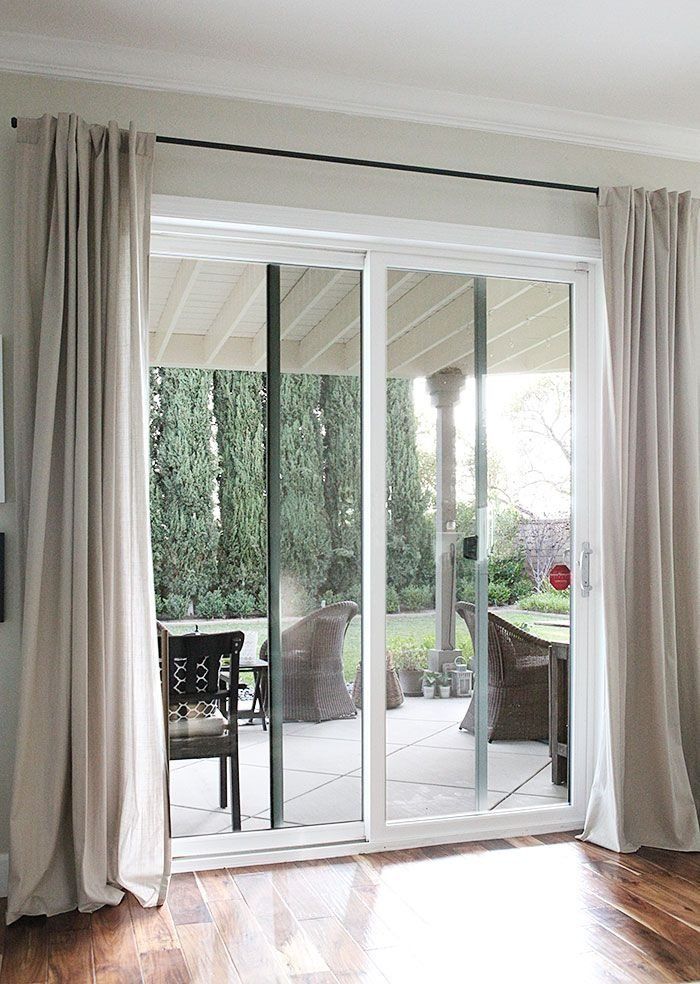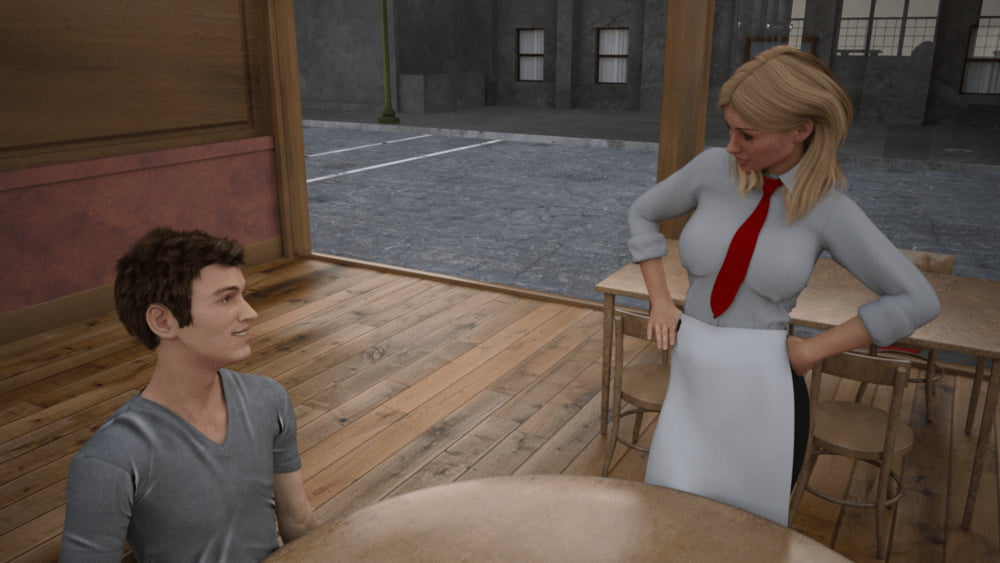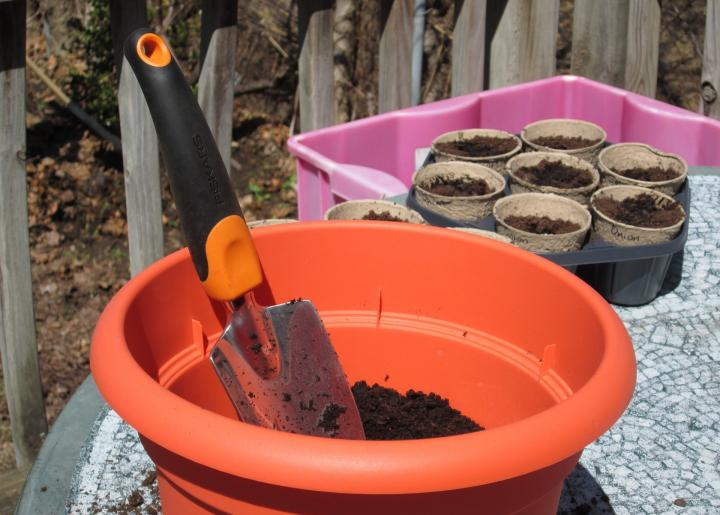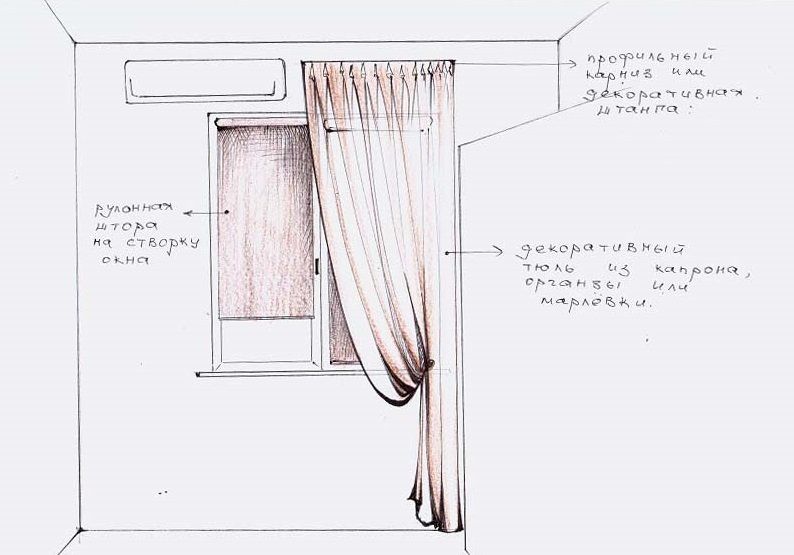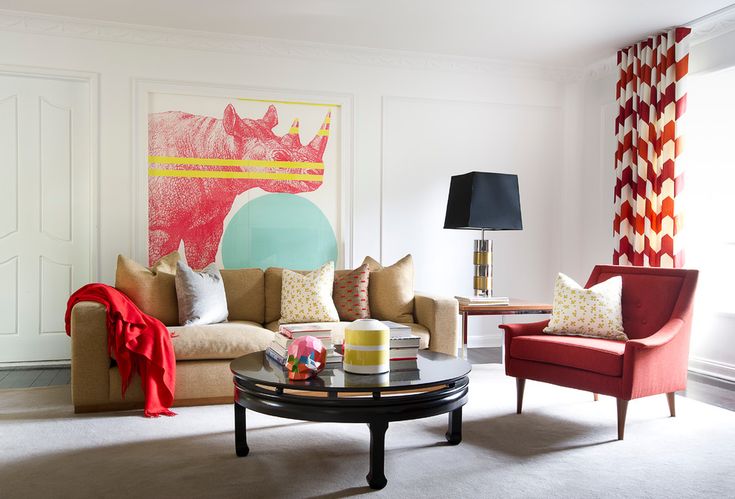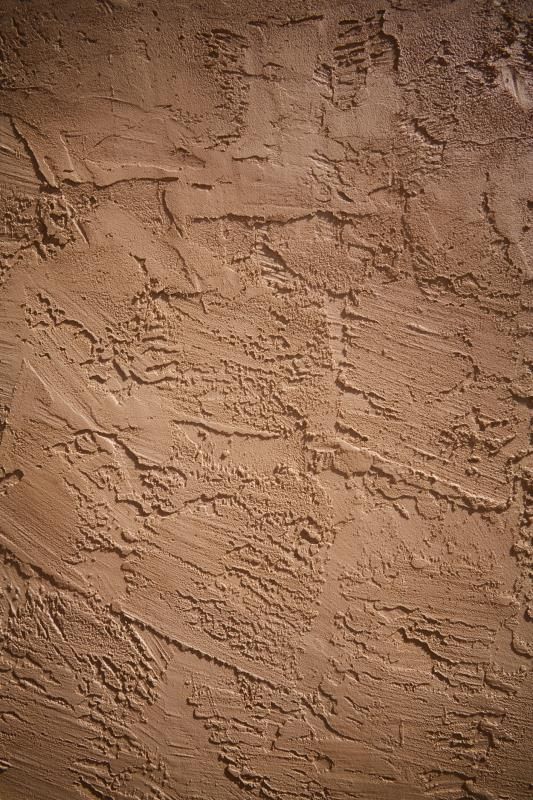Arts and crafts living room ideas
How to do an Arts & Crafts interior
You may have noticed that the Arts and Crafts movement is having a bit of a moment, with some of today’s naturalistic wallpapers and fabrics, rustic furniture and pared-back interiors seeming to have their roots in this style. Spanning 1860 to 1920, Arts and Crafts was a celebration of simple, honest craftsmanship. It was a reaction against mass production and the excesses of Victorian design, which were flaunted at the Great Exhibition in 1851. This show-cased contemporary industrial design and featured more than 100,000 objects. It was an exciting spectacle, but it did have its detractors, including William Morris, one of the movement’s most famous figures. He was so appalled by the show’s excesses that it reputedly reduced him to a bout of sickness.
If it was originally a response to industrialisation, then perhaps its current resurgence is a reaction to digitisation and the pace of the modern world. ‘The ethos of the Arts and Crafts movement is very relevant to life today,’ says antique dealer and designer Christopher Howe. ‘There is a renewed interest in the way furniture is made, which values materials and the revival of craftsmanship.’
It heralded a new approach in which architecture, furniture and adornments were all intended to sit in harmony. Many of the period’s key players were architects, for example Edwin Lutyens, who was renowned for his imaginative adaptation of traditional building styles, and Philip Webb, who is best known for designing the Red House in Bexleyheath as a family home for Morris in 1859.
Designer Ben Pentreath, who decorated an Arts and Crafts house in Hampstead featured in the May 2018 issue of House & Garden, is an advocate of its contemporary appeal. ‘Is there anything more soothing than the idea of a generous, friendly bay-window seat, overlooking a herb garden; or a deep inglenook fireplace, with wide oak boards on the floor and a gentle ticking of a Charles Voysey clock on the mantel?’ he asks.
Despite their rejection of Victorian frivolity, the proponents of Arts and Crafts embraced ornament – as long as it was ‘secondary to the thing ornamented’.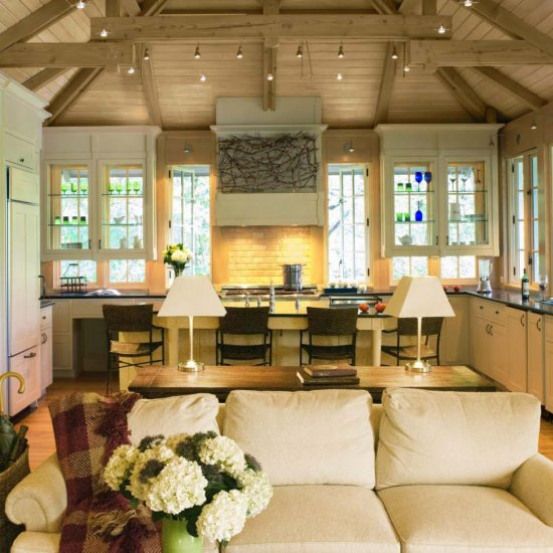 Wallpapers and carpets were acceptable, as long as their patterns were not ‘suggestive of anything but a level or plain’. Hence the rather flat, simplified style of Arts and Crafts patterns, which continue to capture our imaginations today.
Wallpapers and carpets were acceptable, as long as their patterns were not ‘suggestive of anything but a level or plain’. Hence the rather flat, simplified style of Arts and Crafts patterns, which continue to capture our imaginations today.
Living pattern
William Morris created his first pattern, ‘Trellis’, in 1862. His designs, which featured British flora and fauna and naturalistic colours, gained popularity in the 1880s and 1890s, and a huge number are still available today through Style Library. ‘We launch prints, weaves and embroideries based on designs from the Morris archive every year,’ says Clare Vallis, creative director of Morris & Co at Style Library. Morris & Co’s most popular collection is ‘Pure Morris’, which launched in 2016 and features neutral coloured, pared-back designs. ‘This range has taken Morris’s designs to a new audience who found the original colour palette did not work in their homes,’ says Clare. In May, Style Library is launching a collection in honour of May Morris, William’s youngest daughter, who was a very accomplished embroiderer and textile designer.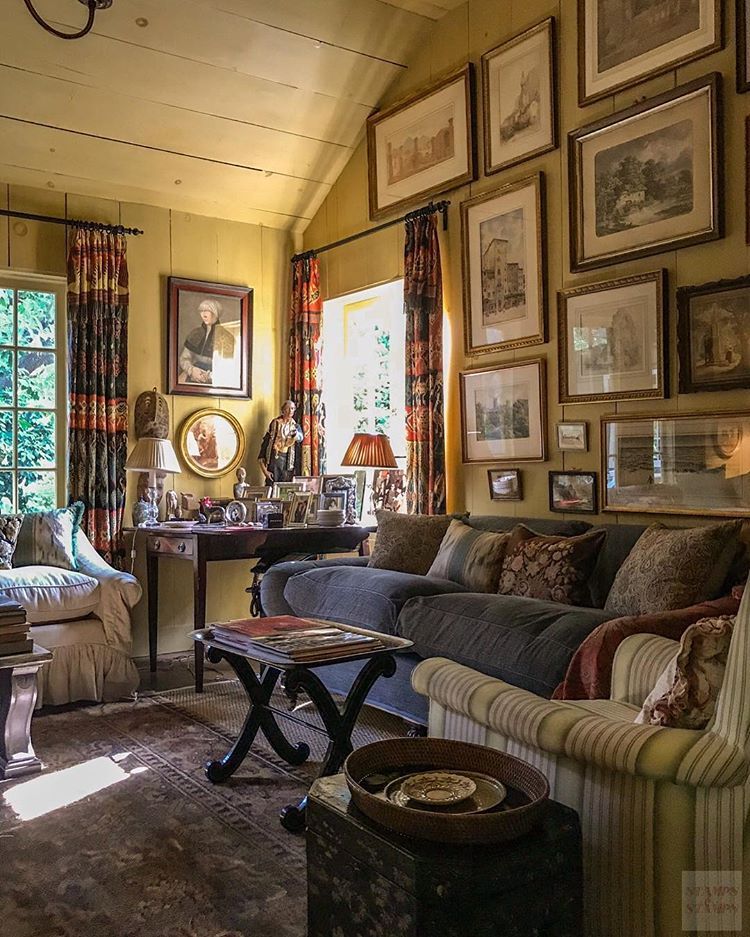 ‘She was ahead of her time,’ says Clare.
‘She was ahead of her time,’ says Clare.
Others followed in Morris’s footsteps, including the architect CFA Voysey, whose patterns featured bold repeats and col- ours. Some of his designs are available through House of Hackney, Lewis & Wood and US company Trustworth Studios.
Elegant simplicity
In a lecture in 1880, William Morris said that ‘simplicity of life, even the barest, is not a misery, but the very foundation of refinement.’ Arts and Crafts furniture followed a similar vein – it was clean-lined, relatively free of adornment and made of solid, quality materials, such as oak. ‘The great thing about this furniture is that it is easy to look at,’ says antique dealer Paul Reeves, who spe- cialises in Arts and Crafts furniture and textiles, and counts Veere Grenney and Ben Pentreath among his clients. ‘It can go in all sorts of interiors – from the grand to the country cottage.’ The downside? ‘Some of it can be too big for the modern home.’
Key designers from the period include Charles Rennie Mackintosh, the Scottish architect who crafted distinctive high-backed chairs, Ernest Gimson, best known for his traditional ladder-back chairs, and Philip Webb, who produced simply constructed rustic furniture.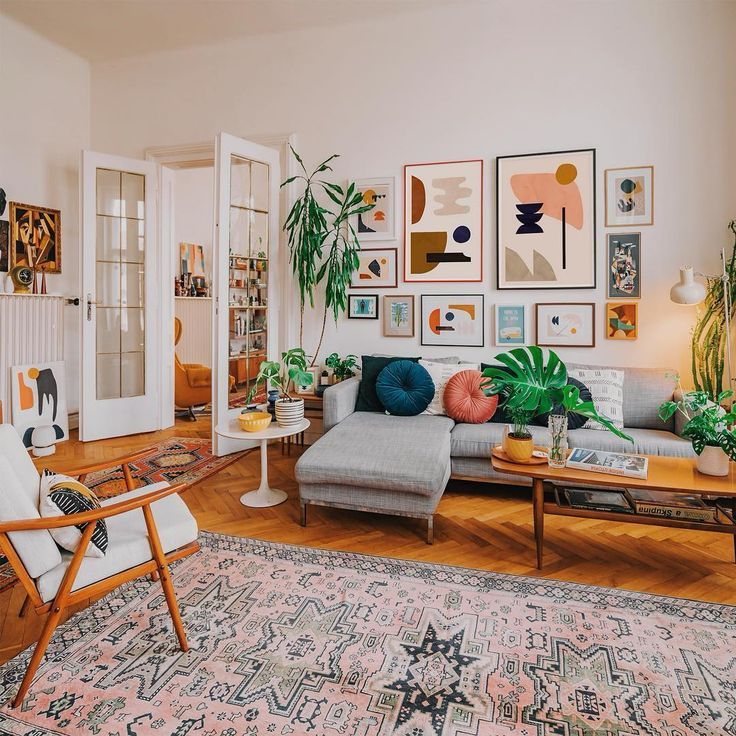 What should we be buying now? ‘George Walton, who was a friend of Mackintosh, is very under-rated, perhaps because his designs are rather subtle,’ says Paul.
What should we be buying now? ‘George Walton, who was a friend of Mackintosh, is very under-rated, perhaps because his designs are rather subtle,’ says Paul.
If your budget does not stretch to original pieces, there are contemporary designs that have their basis in the Arts and Crafts. Heal’s has released the ‘Blythe’ collection, which nods to the pieces designed by Ambrose Heal in the early twentieth century. Russell Pinch’s work also takes its reference from Morris. ‘I was exposed to his work a lot as a child and it has had a lasting impact,’ says Russell, whose ‘Avery’ chair has its roots in Morris’s rush-seat ‘Sussex’ design. ‘It is all about the simplicity of the line in this chair – it is still so relevant to today,’ he explains. It is not just the aesthetics that relate to the Arts and Crafts, but also Russell’s approach to craftsmanship. ‘Morris worked tirelessly with makers to keep them going and I want to celebrate the unsung heroes in the workshops that we use. Can we raise a toast to them?’
12 ways to embrace heritage style |
Arts and crafts decor is perfect for those seeking to inject nature and heritage in into the home.
Dating back to the late 19th century, the Arts & Crafts Movement sought to celebrate craftsmanship, honest materials and the beauty of nature in an increasingly industrialised society of factory produced goods.
Influenced by the Medieval aesthetic and a deep appreciation for the natural world, the style is renowned for its intricate fabric and wallpaper prints, many of which were produced for Morris & Co, the design firm set up by William Morris, a pioneer of the Arts & Crafts Movement.
Still available today in their original colorways, these designs are an easy way to embrace the heritage look within interior design, particularly when paired with a liberal use of natural wood and simple, artisan crafted furniture which are also characteristic features of the style.
(Image credit: Project by Zoe Feldman / photograph by Stacy Zarin Goldberg)
Arts and crafts decor – 12 ways to embrace heritage style
When it comes to arts and crafts decor there are so many ways to channel the look.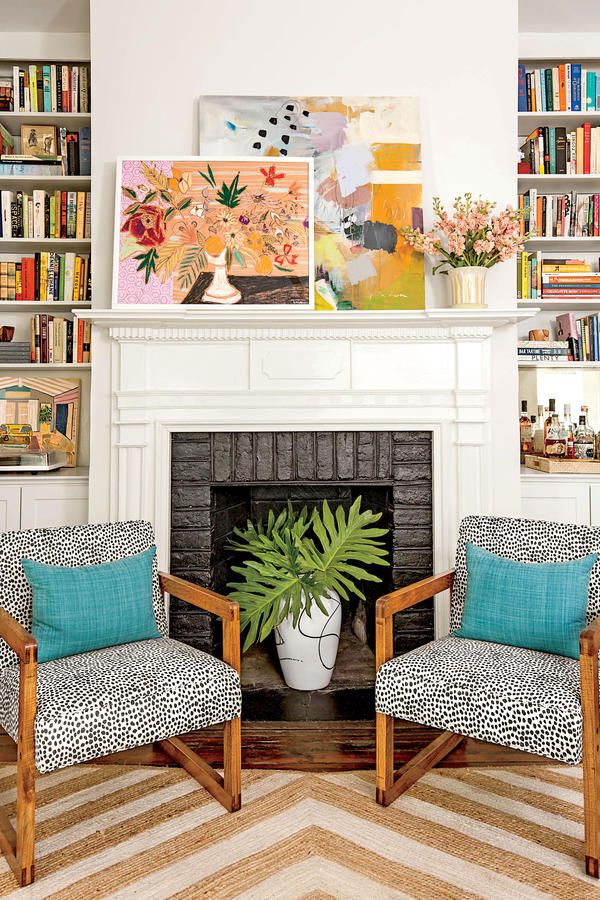 To help get you started we've rounded up a host of beautiful decorating ideas inspired by the Arts and Crafts Movement along with some handy advice from the interiors experts.
To help get you started we've rounded up a host of beautiful decorating ideas inspired by the Arts and Crafts Movement along with some handy advice from the interiors experts.
‘The Arts and Crafts Movement was all about unique design that celebrated quality craftsmanship, natural textures and nature-inspired motifs, three elements that combine to create a beautifully layered and cozy style,' says Sue Jones, creative director of Oka.
'I think the key to achieving the arts and crafts look is to embrace pieces that exemplify the skill of their makers, whether that be handmade and glazed pots, hand-woven rattan furniture or hand-embroidered upholstery. I’d pair these with warm-colored rugs, pleated lampshades and plenty of pattern to add lots of lovely detail and make the space feel really inviting.’
1. Decorate with arts and crafts wallpapers
(Image credit: Morris & Co)
Stylised flora and fauna designs are a defining feature of arts & crafts decor, many of which were designed for the company Morris & Co and printed onto wallpapers and fabrics using traditional methods.
Today a host of the original designs are still available to buy in the authentic colorways, as well as an array of refreshed palettes perfect for modern living. Designed by J.H. Dearle in 1880 and printed by Morris & Co, this ornate Severne damask print has recently been revived in an array of fresh, delicate colorways for wallpapers and fabrics, perfect for decorating an uplifting living room.
2. Use arts and crafts prints to inspire an interior palette
(Image credit: Colin Poole)
Wallpaper is a brilliant way to breathe life into practical spaces like kitchens and can also be a great starting point for developing kitchen color ideas. Inspired by an embroidered panel by May Morris, the daughter of William Morris, this Seasons by May wallpaper features an ornate trellis design of parakeets, tulips and flowers –perfect for bringing joy to a kitchen. The print features lovely green and red tones which have been picked out for use over the cabinets and kitchen island.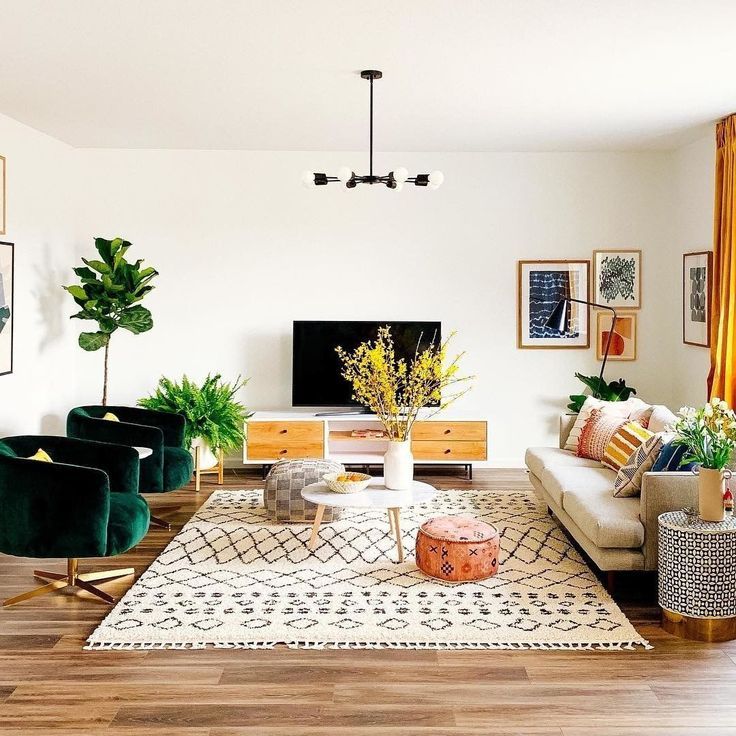
3. Create wow-factor in a hallway
(Image credit: Interior by Zoe Feldman / photograph by Stacy Zarin Goldberg)
Hallways are a great place to be bold with print, plus, being transient, connecting spaces, you can afford to experiment with darker colors, too.
In this traditional hallway, interior designer Zoe Feldman has put a quirky twist on the arts and crafts decor by pairing Morris & Co's Pimpernell wallpaper, originally designed in 1876, with a playful animal-print stair runner.
4. Make a feature of your windows with arts and crafts fabrics
(Image credit: Warner House)
If wall-to-wall pattern is too much, why not make a feature of your windows with curtains and blinds in arts and crafts inspired fabrics? Featuring deer, birds and foliage, this Balmoral design from Warner House has a distinct arts and crafts feel.
Pictured in the green colorway it works particularly well in a country kitchen alongside natural materials of stone, wood and linen.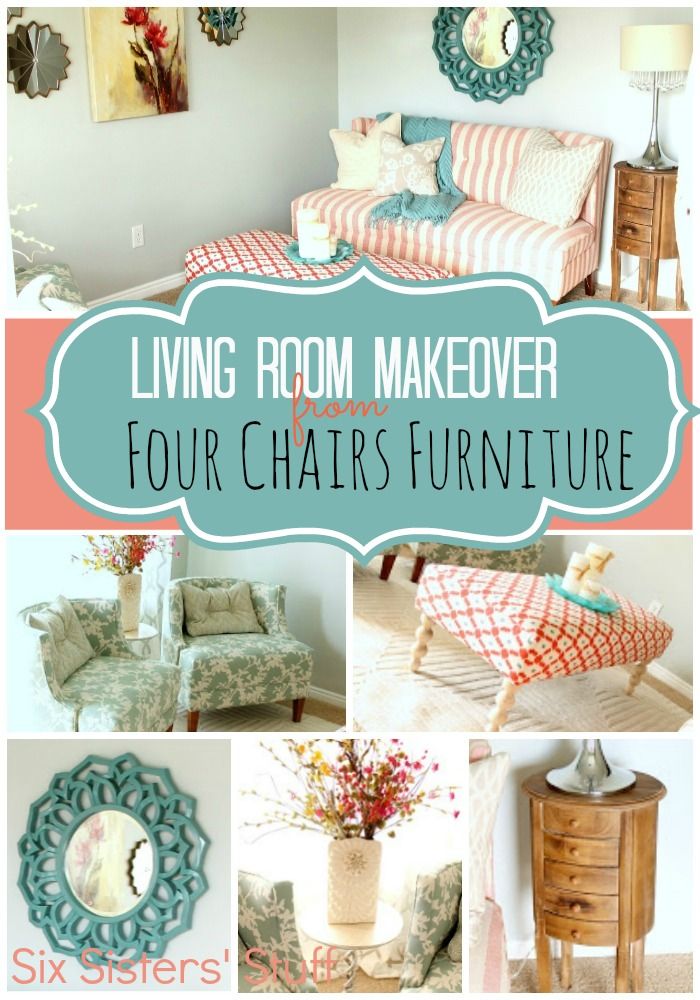
5. Embrace arts and crafts decor with wall art
(Image credit: Surface View)
Adding wall decor depicting an arts and crafts print is a quick and easy way to channel the heritage look. Bringing instant wow-factor to a dining room, this digitally printed wall hanging by Surface View features the famous Pimpernell design by William Morris.
(Image credit: Murphy Deesign)
If you love entertaining then bold wallpapers are perfect for bringing wow-factor and a sense of occasion to dining rooms.
In this beautiful traditional dining room designed by Murphy Deesign , Morris & Co's classic Strawberry Thief wallpaper has been paired with woodwork in a co-ordinating dark blue to create a cozy and intimate atmosphere.
7. Decorate with wood
(Image credit: Cave Interiors)
If you're looking to embrace arts and crafts decor then you can't go wrong by decorating with wood. Traditional wooden wall paneling was a common feature of the arts and crafts house style and wood was also the material of choice for arts and crafts furniture designers.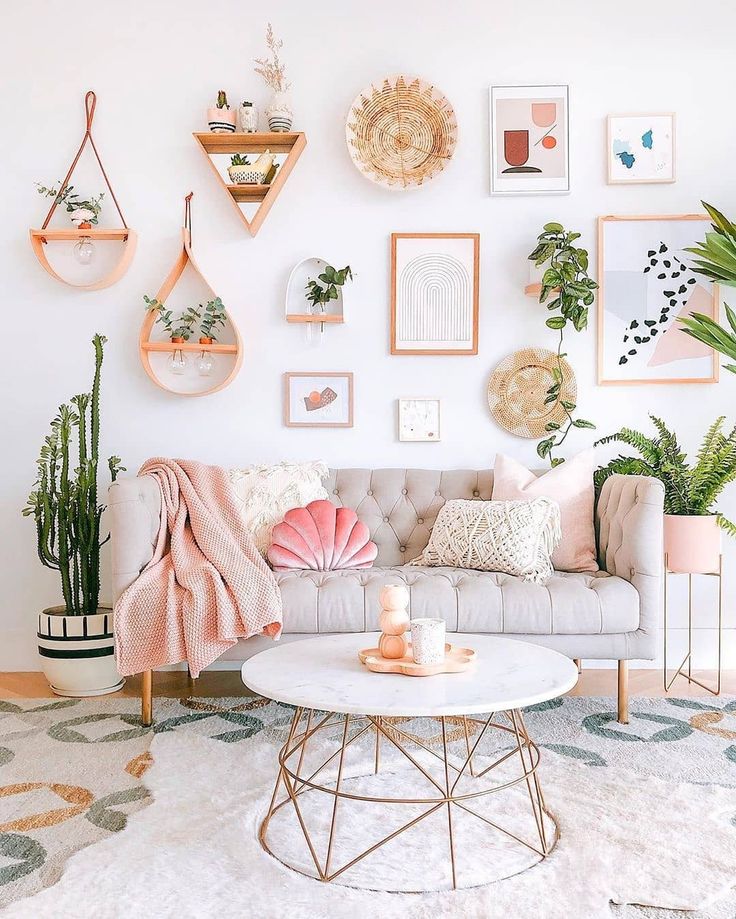
This arts and crafts home has been beautifully restored by Cave Interiors and features the original wood paneling. To bring the look up-to-date the paneling has been paired with curtains in a beautiful fabric covered in hand-painted bird illustrations.
8. Update living room seating with arts and crafts fabrics
(Image credit: Morris & Co)
Upholstering living room seating in arts and crafts prints is a lovely way to inject pattern and heritage into a living room without dominating the space.
An armchair covered in the flamboyant acanthus leaf print is guaranteed to bring life to an empty living room corner – to create a cozy feel opt for the design in a sumptuous velvet.
9. Choose vibrant arts and crafts fabrics for a modern twist
(Image credit: Morris & Co)
Originally Morris & Co designs were printed in limited colorways, but today many of the prints have been reinvigorated in contemporary palettes perfect for 21st century living.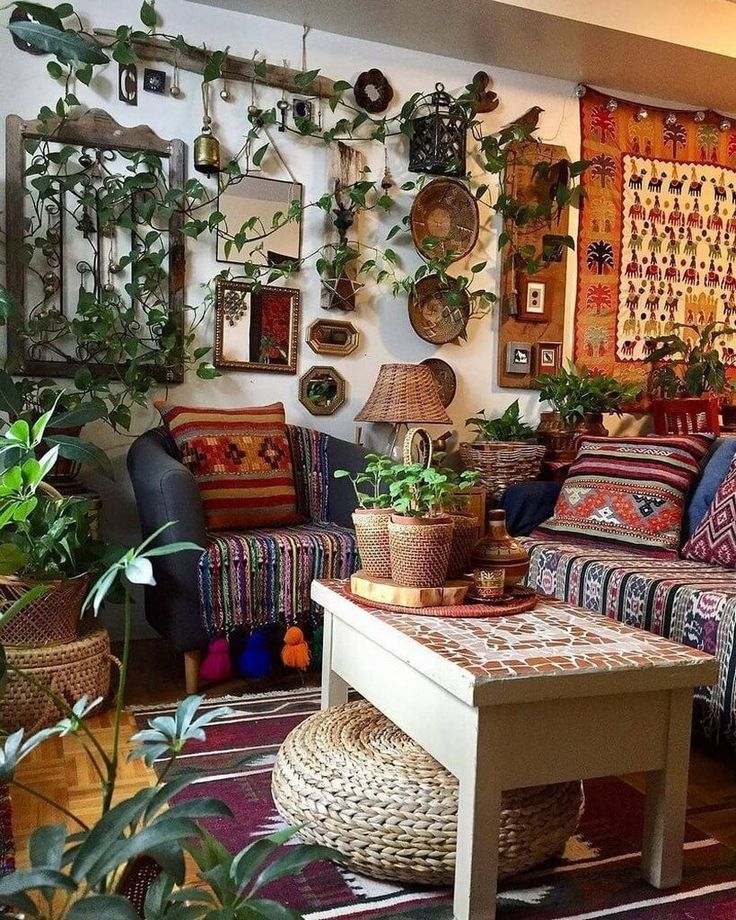 The new Cornubia collection from Ben Pentreath and Morris & Co sees traditional Morris prints for fabrics and wallpapers revived in a vibrant colorways perfect bringing a color pop to upholstery, walls or window treatments.
The new Cornubia collection from Ben Pentreath and Morris & Co sees traditional Morris prints for fabrics and wallpapers revived in a vibrant colorways perfect bringing a color pop to upholstery, walls or window treatments.
'I began with a whole new palette – colors which are on my mind at the moment: tangerine, lemon yellow, primrose, soft pinks, blues and bright apple greens – the colors of spring and summer,' says interior designer Ben Pentreath . 'As we translated these new combinations into the historic patterns, there was a visible thrill in seeing how new and happy everything looked and felt! I was like a child in a candy store. Maybe intentional, maybe accidental, but these were the colors and patterns of my mid 70s childhood all over again.'
10. Create a romantic country bedroom
(Image credit: Bedroom)
Bursting with sinuous stems and blooms, arts and crafts wallpapers are perfect for bringing the romance of nature into the bedroom, as demonstrated this beautiful scheme by Neptune. Designed by J.H. Dearle in 1892, Blackthorn is a classic arts and crafts wallpaper which is still available today in its original colorway.
Designed by J.H. Dearle in 1892, Blackthorn is a classic arts and crafts wallpaper which is still available today in its original colorway.
When decorating with ornate bedroom wallpapers ‘scale and balance become imperative,' advises Simon Temprell, interior design manager at Neptune. ‘The heavily patterned William Morris wallpaper could easily dominate the room, but the balance is maintained with the addition of a large statement four poster bed in simple oak. The painted chest brings out the warmer tones from the wallpaper without fighting it,’ he adds.
11. Bring heritage style to the bathroom
(Image credit: Morris & Co)
Wallpaper can really bring wow-factor to practical spaces like bathrooms. If you love the spectrum of sea blue tones, from crisp turquoise through to subtle seaweed greens, but want to move away from classic coastal motifs, then Morris & Co’s Wilhelmina wallpaper in Indigo, could be the perfect solution.
Inspired by the work of May Morris, daughter of the arts and crafts pioneer William Morris, the design captures the soothing colors of the ocean but also injects heritage and history perfect for a period home.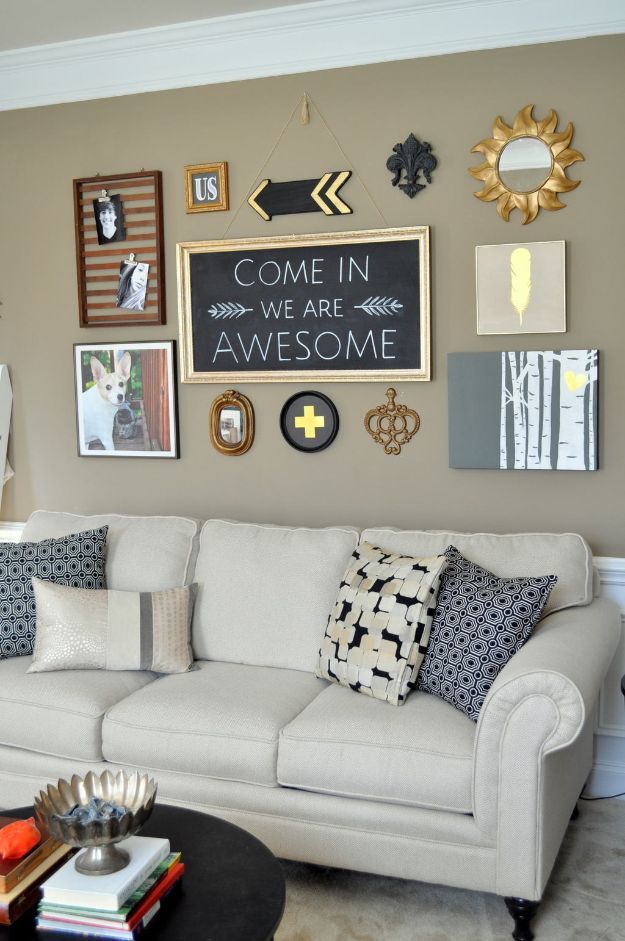
12. Pair arts and crafts prints with paneling
(Image credit: Jody Stewart)
Arts and crafts prints are renowned for being flamboyant and detailed and when used over all four walls they can risk overpowering a room. To temper the look why not pair the papers with paneling in a pastel shade as done in this beautiful cloakroom idea?
Being rooms in which we spend little time, but also spaces frequented by guests, cloakrooms make brilliant spaces to experiment with print and color.
What is arts and crafts decor?
Flourishing from around 1880, the Arts and Crafts Movement set to provide an antidote to the ugly, poorly designed and inferior quality machine-made products associated with the industrialism of the Victorian age. Instead, importance was placed on elevating the role of the artisan, the decorative arts, craftsmanship, honest materials and simplicity of form within domestic design.
Visually, this philosophy was expressed through a myriad of styles and mediums, from humble wooden furniture to ornate surface design.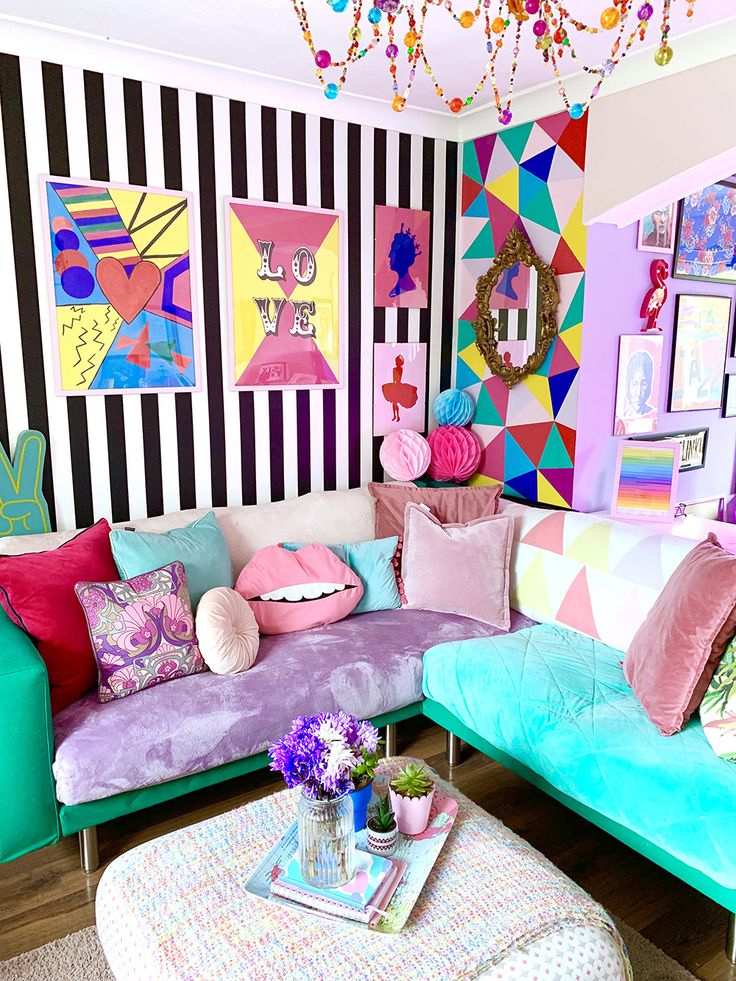 Taking inspiration from nature and a Medieval aesthetic, leading figures such as William Morris and C.F. Voysey, created stylised flora and fauna patterns for wallpapers and fabrics, many for the decorating firm Morris & Co founded by the father of the movement himself in 1861.
Taking inspiration from nature and a Medieval aesthetic, leading figures such as William Morris and C.F. Voysey, created stylised flora and fauna patterns for wallpapers and fabrics, many for the decorating firm Morris & Co founded by the father of the movement himself in 1861.
With enduring appeal these beautiful prints, whether archive originals or recolored designs, look just as effective today, bringing visual delight and British heritage into the home.
We plunge into the world of arts and crafts with the gallery Lili & Vava
We tell in detail about the direction, its branches and representatives in Russia.
Works by Alena Kost. Source: Lili & Vava official website
What is arts and crafts?
Initially, arts and crafts is a type of artistic creativity, the purpose of which is the creation of aesthetic objects used in everyday life. Traditionally, arts and crafts include objects made of clay, porcelain, wood and metal, as well as weaving, sewing and works using glass.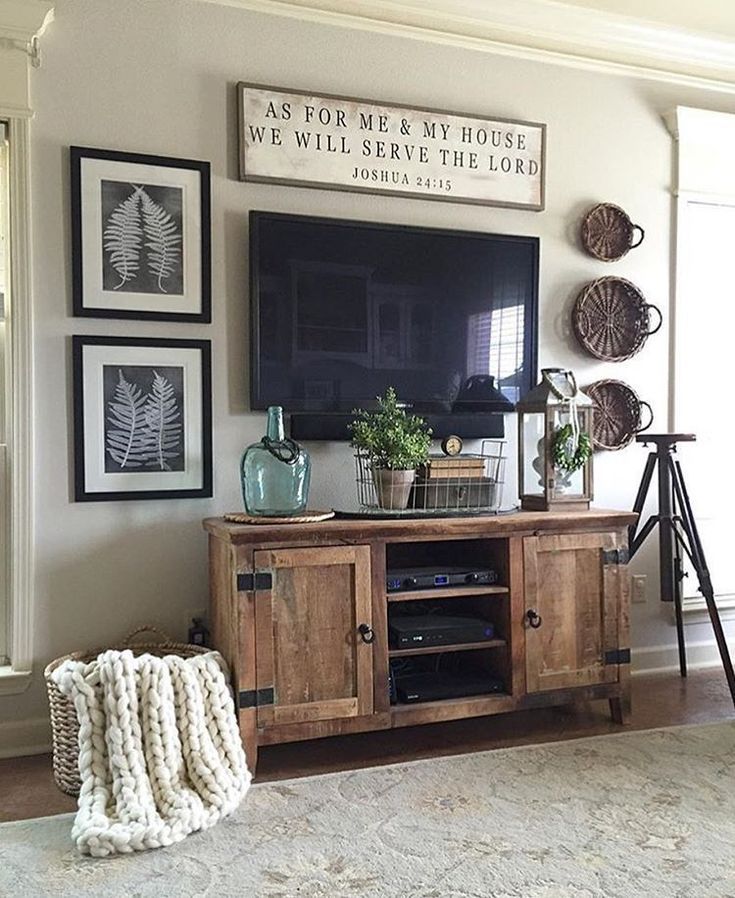
Works by Olga Varzer. Source: Lili & Vava official website
History of DPI
Decorative and applied art goes back to the environment of farmers. Historically, it has been strongly associated with nature and human life. Since ancient times, the master wanted to make functional items not only comfortable, but also aesthetic. Thanks to this, the art of artistic processing of materials such as wood, clay, stone, leather and others developed.
In the 17th-18th centuries, market relations began to actively form in Russia. At the same time, handicrafts reached a new level - it became the main occupation in entire regions and villages. The peak of the development of crafts in Russia falls on the second half of the 19th century.
The change in social life and the emergence of industrial production makes people rethink the meaning of arts and crafts. Its utilitarian function fades into the background, giving way to an aesthetic one.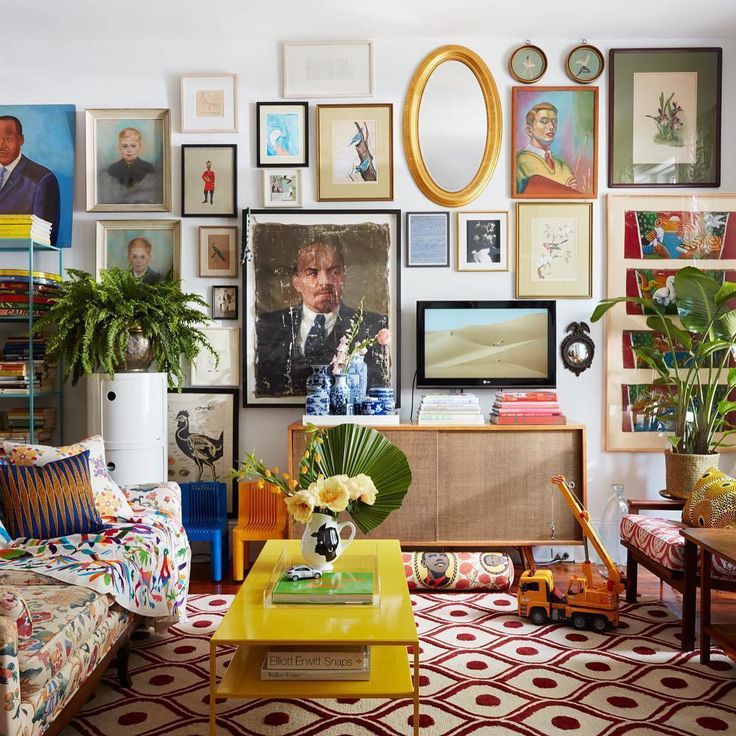
Group exhibition of Lili&Vava Decorative Art Lab gallery in Cube.Moscow.
Source: Lili & Vava official website
Decorative and applied arts today
With the advent of modernism in the 20th century, interior design was no longer perceived as a luxury available only to the elites. It became more accessible and mass, because of which it was perceived as a competitor to arts and crafts. However, today it is clear that these are different areas of activity. Moreover, design, namely interior designers, often only help DPI artists find orders and customers.
Modern arts and crafts have partly departed from the traditional and its utilitarian function. Now masters often create exclusively artistic objects from classical decorative materials - “for beauty”.
Photo: Evgenia Dyuzhenkova
Due to the change in the original concept of this direction, today the question of its name has become debatable.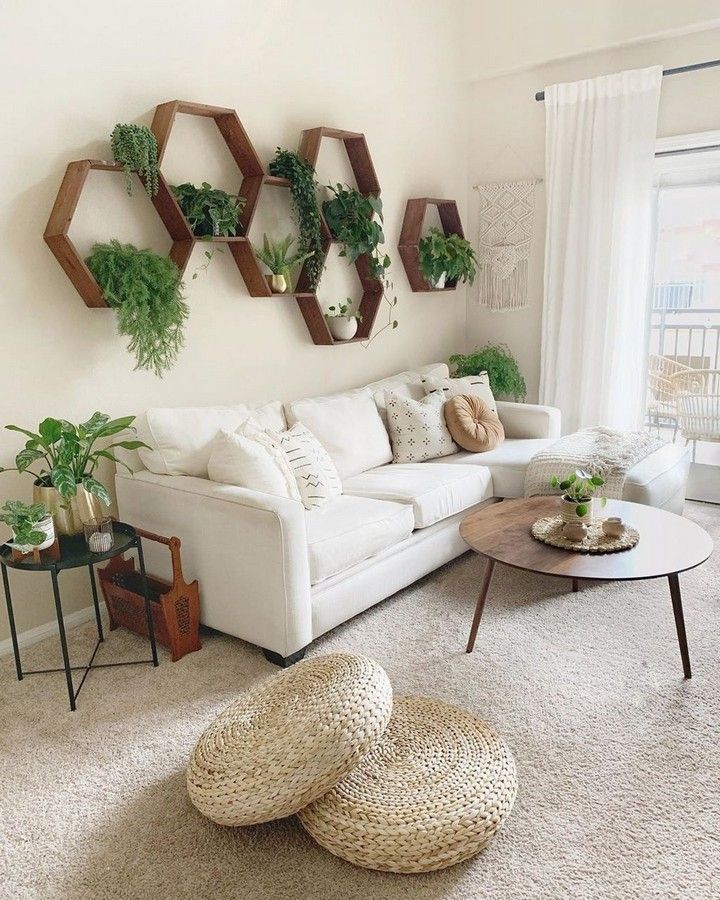 The term "arts and crafts" refers us to the Russian cultural tradition.
The term "arts and crafts" refers us to the Russian cultural tradition.
An alternative name - "fine craft" - not so long ago came from foreign languages in Russian. It refers both to handicraft creativity (craft), and, by analogy, to exclusively aesthetic works (fine art).
Another variant of the name is a collection design. It refers to limited items that combine utilitarian and aesthetic functions. Although so far the term DPI can be considered the most common and well-known.
Exhibition of Lili&Vava Decorative Art Lab and Atelier Choutko.
Source: Lili & Vava official website
Where to study for a Master of Fine Arts?
A fairly strong school of arts and crafts was formed in the USSR. Its basic principles still exist in key institutions where masters of arts and crafts are trained. Among them are the Stroganov Academy in Moscow and the Stieglitz Academy in St. Petersburg.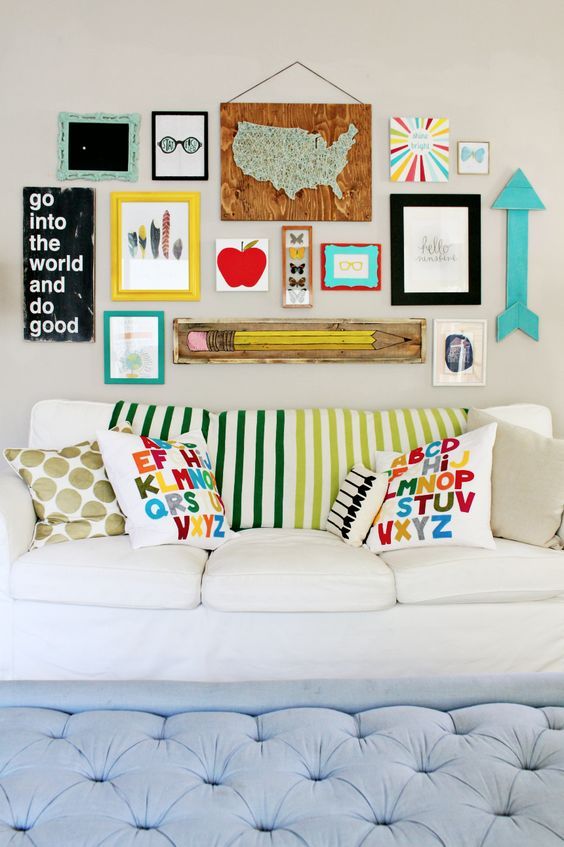
Students are trained according to Soviet programs, thanks to which graduates have a strong technical base. Often the thesis becomes the first serious project. Prior to her, most of the time is devoted to the study of various techniques.
In addition, there are departments of arts and crafts in the Ural State Academy of Arts, Russian State University. A.N. Kosygin, at the Moscow State Institute of Cinematography, St. Petersburg State University of Industrial Technologies and Design and other higher educational institutions.
Source: official website of Lili & Vava
Of course, it is now possible to start professionally engaging in creativity without education. It will not be difficult for you to find a master class on working with clay on your own. You can try working with porcelain at the Moscow Ceramic School. At the Workshop and School of Glass at VDNKh, visit a master class in glass making. The hardest thing will be finding offline tapestry classes. Although, if desired, all the necessary information can be found on the Internet.
Although, if desired, all the necessary information can be found on the Internet.
There is an opinion that arts and crafts are slightly less popular among artists than painting. However, in recent years it has been developing especially actively. Each art master has his own story - for some it is a family tradition, someone chose a direction through a competition at a university, someone came to creativity at a conscious age. What unites artists is a constant desire and endless opportunities to experiment.
Works by Dmitry Zubarev.
Source: Lili & Vava official website
Lili&Vava
Collectors and gallery owners occupy a particularly important place in the field of any art. To better understand how an arts and crafts gallery can live, we met with Alexandra Zhukova, the founder of Lili&Vava Decorative Art Lab.
Laboratory and gallery opened in 2020. It presents different areas of DPI: ceramics, textiles, work with metal and glass.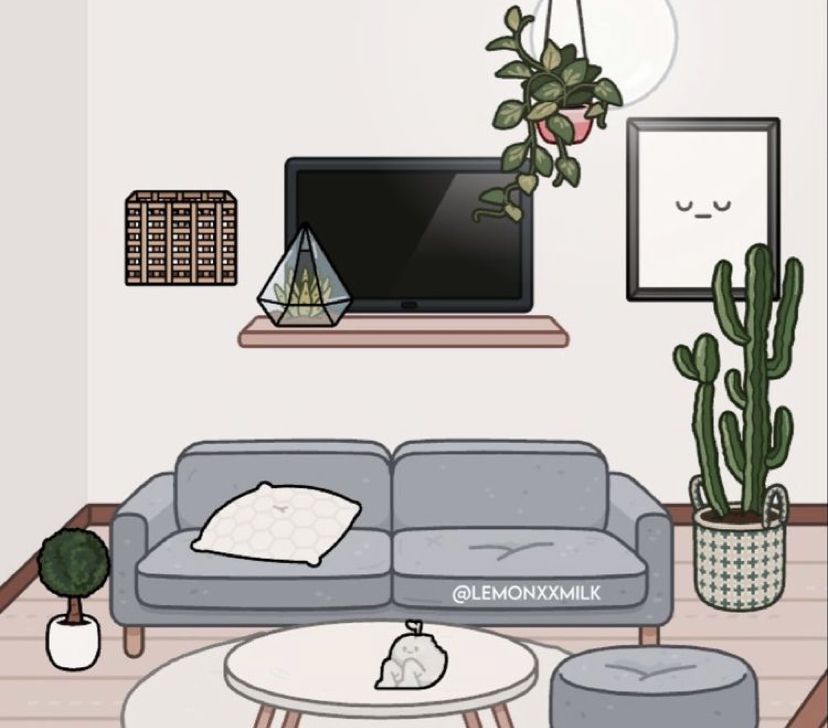 The project's website states that the goal of the lab is to show that arts and crafts "has become an important heir to tradition, part of the contemporary art world, and as relevant as ever." write off local brands? Definitely not!
The project's website states that the goal of the lab is to show that arts and crafts "has become an important heir to tradition, part of the contemporary art world, and as relevant as ever." write off local brands? Definitely not!
Small brands use high-quality and beautiful raw materials and accessories for their products, which are sometimes even better than luxury ones. But the prices for goods are much lower, because the manufacturer does not make a high markup for brand fame.
Alexander Zhukov.
Source: Lili & Vava website
Alexandra first got acquainted with arts and crafts in 2014 in Europe. There, the direction began to develop earlier than in Russia: even then, at fairs, one could meet contemporary artists who worked with ceramics and textiles. Today, DPI has already become an organic part of contemporary art in our country.
The Lili&Vava project brings together artists from different cities - Moscow, St.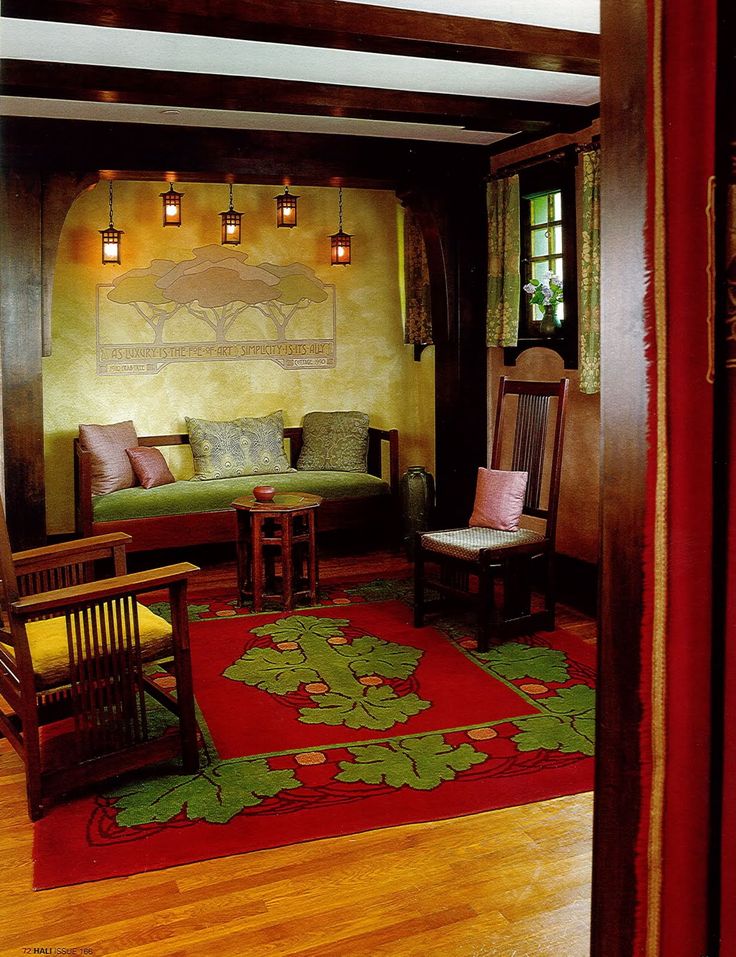 Petersburg, Pskov, Taganrog. All of them work separately from each other. The recruitment of masters took place individually from the very beginning of the gallery: some joined it immediately thanks to Alexandra, some of the artists entered the gallery on their own.
Petersburg, Pskov, Taganrog. All of them work separately from each other. The recruitment of masters took place individually from the very beginning of the gallery: some joined it immediately thanks to Alexandra, some of the artists entered the gallery on their own.
Since the beginning of its existence in 2020, the Lili&Vava gallery has been functioning online. Last year, the artists' works were presented live at various venues in Moscow. For example, in the Cube.Moscow gallery.
In the second year of the gallery's existence, the team got the feeling that they needed their own cozy place, where all artists and trends would be represented, where guests, clients and partners could be invited. Nevertheless, in the online format it is quite difficult to understand the real size of the product, its color and texture. The main criteria in the search for their territory were the required area, as well as the location in the center. And in December 2021, the laboratory was located at Sivtsev Vrazhek, 15/25.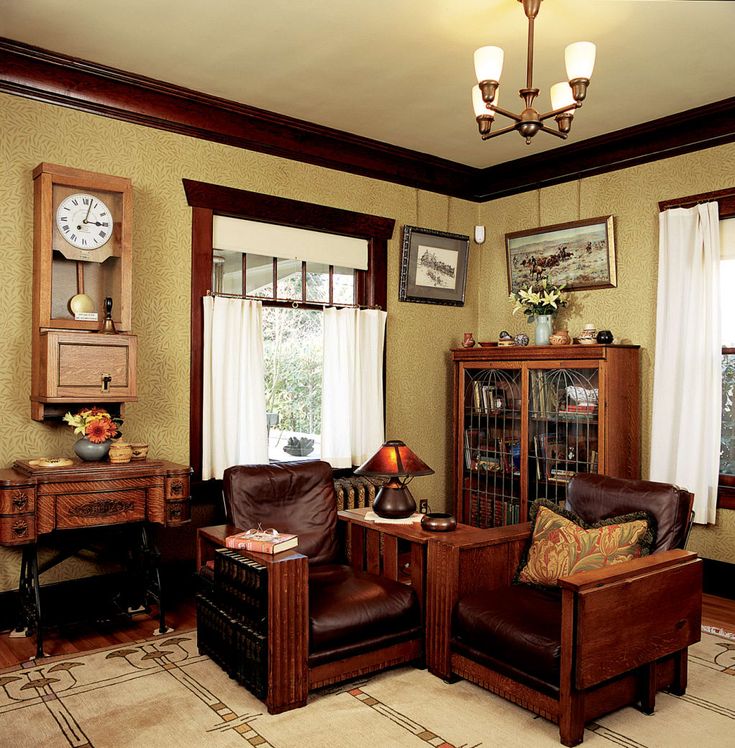
“Now I try to get rid of perfectionism and move forward in small steps, otherwise you can get stuck in the desire to do it perfectly. You can't immediately go where there are galleries with decades of history. You have to go through all the stages of the life of the project”
– Alexandra Zhukova says
Ekaterina Tyumina's work.
Source: Lili & Vava website
The main task of the gallery is to attract designers. For the implementation of various projects, they need products that can be found here. It is also easier to find clients through interior designers to sell creations. But no less important for Lili & Vava is communication with the viewer, who first gets acquainted with DPI. The gallery team is always happy to talk about their activities and show the works of artists.
One of the most popular questions for gallerists is why are the items so expensive? According to Alexandra, behind the creation of works there is a very long, detailed process.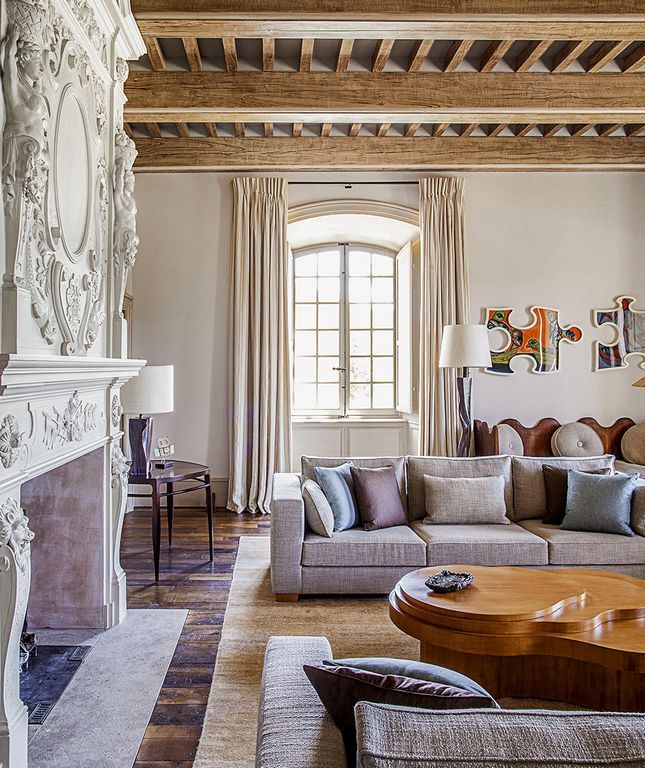 In addition, the raw materials also cost a lot. The price of many items could be even higher, but the gallery presents the work of young authors who are just starting their journey.
In addition, the raw materials also cost a lot. The price of many items could be even higher, but the gallery presents the work of young authors who are just starting their journey.
“The artists and I…want to show that within the arts and crafts you have a lot of spectrum to go. One of them is contemporary art. In terms of technique, such things belong to the DPI, but at the same time they are full-fledged works of modern art. They lose their functionality, the main focus is on the concept”
- Alexandra Zhukova speaks
Works by Sofia Vencislitskaya.
Source: Lili & Vava official website
Alexandra notes that recently one can notice a revival of interest in arts and crafts. In Moscow, besides the Lili&Vava laboratory, other projects are involved in this area.
Among them is the gallery Atelier Choutko, which specializes in carpets and tapestries. She also moved to a new space last year.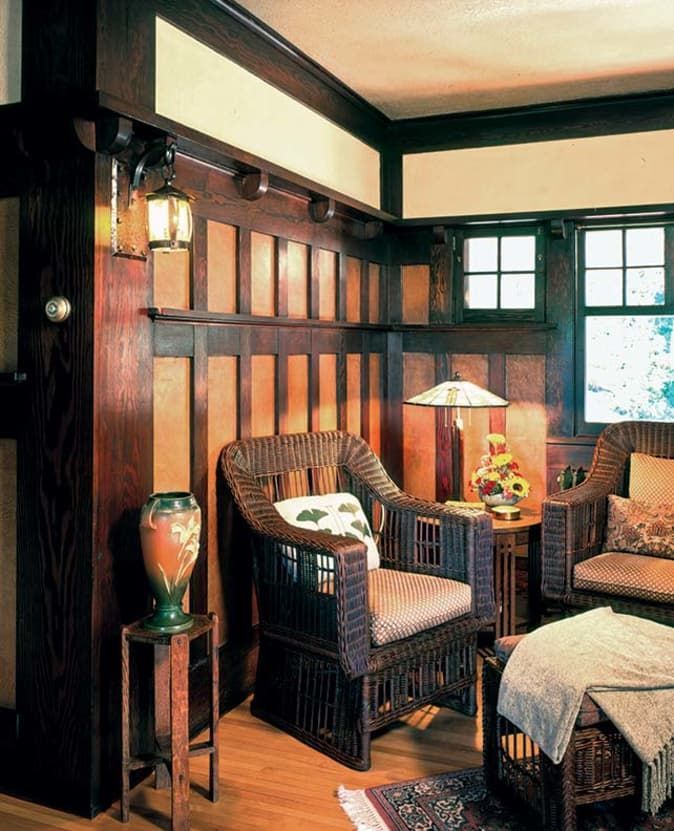 The founder of the gallery, Eugene, has been collecting tapestries for more than a decade and is considered one of the most influential experts in his field in Russia.
The founder of the gallery, Eugene, has been collecting tapestries for more than a decade and is considered one of the most influential experts in his field in Russia.
A new project in the field of arts and crafts and design is the Manner&Matter online platform. It presents more than 1,500 thousand products of Russian designers and artists. The goal of the creators of Christina Krasnyanskaya and Marina Vesna is to collect in one place and show the audience the best specimens in their field. In addition to the online platform, the Manner&Matter showroom is represented in the Heritage Gallery.
To learn a little more about the directions of arts and crafts, we talked to the artists of the laboratory Lili&Vava
Works by Daria Blokhina.
Source: Lili & Vava official website
Tapestries
One of the types of DPI - tapestry - is a one-sided lint-free wall carpet. A plot or ornament is manually created on it.
A plot or ornament is manually created on it.
It is known that this type of weaving existed in Ancient Egypt. You can get acquainted with the old tapestries live in the Pushkin Museum im. Pushkin. There, as part of a permanent exhibition, Coptic fabrics are presented. These are examples of Egyptian art of the 4th-8th centuries. AD Tapestry technique was used in it to create decorative inserts. The technology for creating a tapestry is now not very different from that, only the artistic delights of the authors are added.
Another well-known example of this type of decorative art is the “Lady with a Unicorn”, a tapestry cycle of the late 15th century. They can be found in the Harry Potter films, where the tapestries are located in the Gryffindor common room.
Group exhibition of Lili&Vava Decorative Art Lab gallery in Cube.Moscow.
Source: Lili & Vava official website The process of creating tapestries, according to her, is quite simple.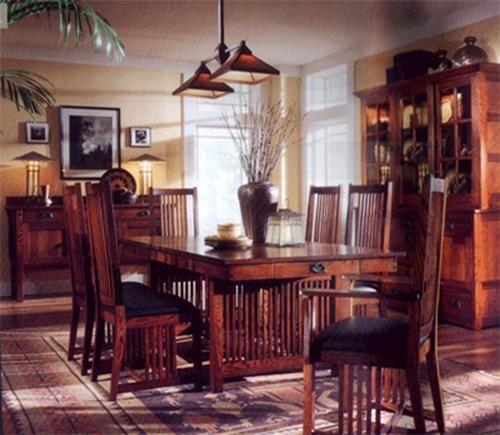
First, a sketch is made - it can be very small, color or monochrome. Next, this sketch is scanned or hand-transferred to a large format. The loom is a large frame with a movable horizontal beam. It is threaded with cotton threads, and a template is sewn here. Thus, the artist sees it through the threads.
Next, the weaving process begins, work goes along the lines from the bottom up. Upon completion, the template is sewn off, and the tapestry is cut off from the loom. The task of the master of applied arts is to enrich the original idea figuratively, with texture and texture.
Daria Blokhina.
Source: Lili & Vava website
Time of work on a tapestry depends on many factors. For example, one work of 2 square meters Daria takala for about six months.
The classic materials for the base in this kind of creativity are cotton threads, cotton twine. Drawing (or ducks) is most often created from wool, wool mixture, acrylic or cotton. However, the choice of this material depends on the author's imagination - you can weave with metallic threads, jude, and even branches and herbs if you wish to create an art object.
However, the choice of this material depends on the author's imagination - you can weave with metallic threads, jude, and even branches and herbs if you wish to create an art object.
Tapestry has its drawbacks. It is believed that this is a rather dusty business. Artists who spend a lot of time in studios constantly inhale microfibres. You can solve this problem with the help of air purification and regular walks. In addition, the sitting position has a negative effect on posture.
According to Daria, the art of tapestry is now very popular in Russia. There are showrooms where weaving items are presented, projects appear where, along with other interior items, textiles are exhibited. For example, in April 2022, tapestries could be found at the ArtDom Russian Design exhibition at Winzavod. This is a popular event in its circles, which helps the promotion of Russian artists and designers.
« In this art, everyone can find something for themselves. The task of the masters is to give an offer, to create an assortment.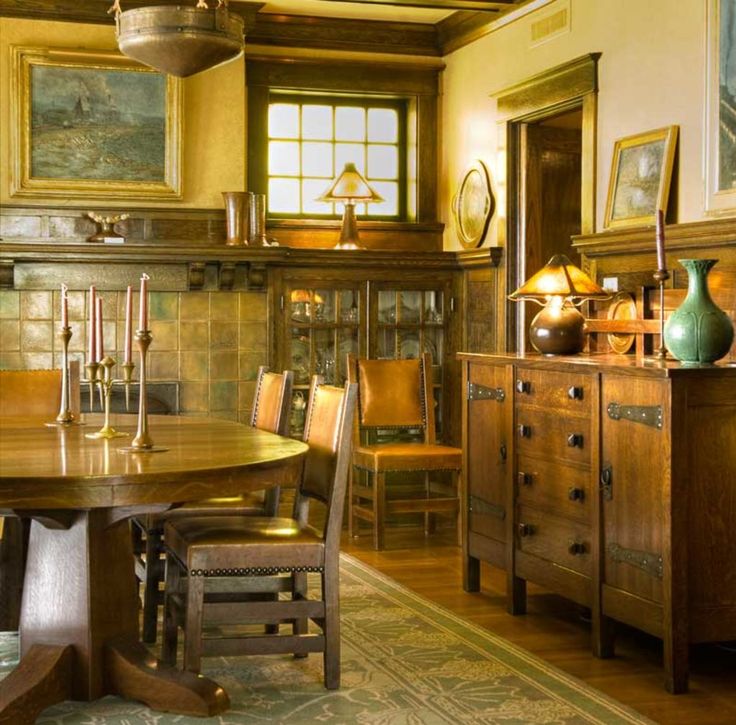 We are in our place, even though we are smaller than the painting. It's okay, we'll continue. What future we make for ourselves, that will be.”
We are in our place, even though we are smaller than the painting. It's okay, we'll continue. What future we make for ourselves, that will be.”
– Daria Blokhina speaking
Group exhibition of Lili&Vava Decorative Art Lab gallery in Cube.Moscow.
Source: official website of Lili & Vava
Porcelain
Porcelain as a direction of DPI is a kind of ceramics. Porcelain products are made from fine white clay. In contrast to it, porcelain is a more finely dispersed material, there is almost no air in it, due to which the products are very thin. The material is especially valued for its whiteness and transparency.
The technologies for creating products from ceramics or porcelain also differ. For example, the potter's wheel is mainly used in working with ceramics, while plaster casting or modeling is more suitable for porcelain.
We talked to Kira Kostina about the features of this material.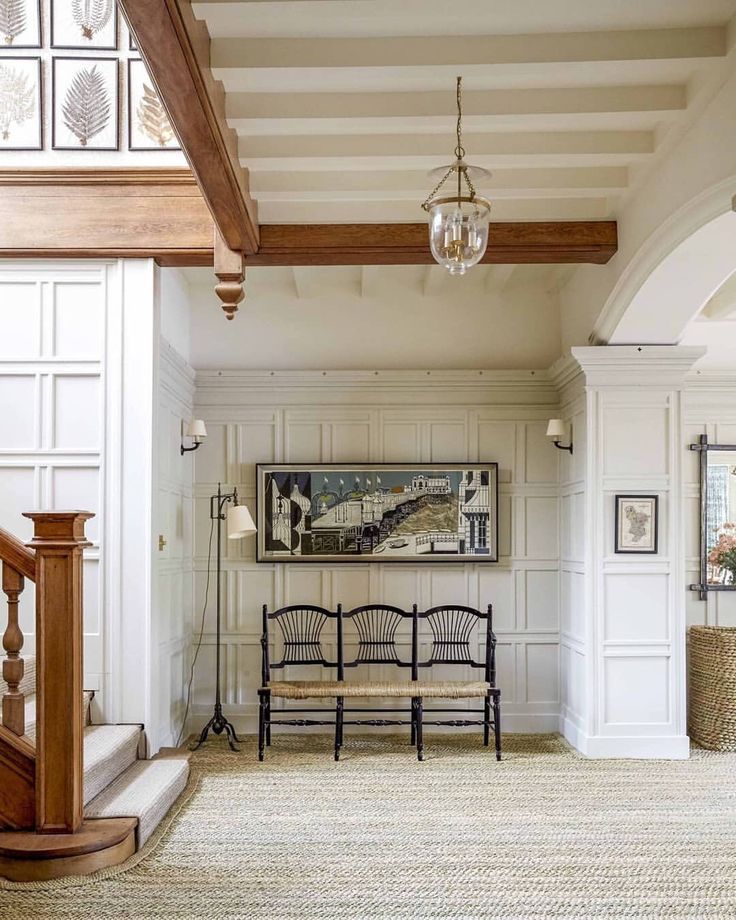 She is an economist by training and worked for a time as an administrative office manager. One day, Kira saw biscuit brooches in the form of twigs in a magazine and began to study information about it. So the artist came to the master class in porcelain, from which it all began.
She is an economist by training and worked for a time as an administrative office manager. One day, Kira saw biscuit brooches in the form of twigs in a magazine and began to study information about it. So the artist came to the master class in porcelain, from which it all began.
“It all happened because of the material, it was porcelain that I fell in love with. It was only later that I realized that this was part of ceramics, that it was all connected with clays, kilns, etc. ”
- says Kira Kostina
Kira Kostina.
Source: Lili & Vava website
Kira's main source of inspiration is nature: branches, leaves, flowers. Botany makes you fantasize and come up with new non-standard techniques. Porcelain is considered a sublime, elite material. Combining it with simple burdocks and roots, Kira removes the pathos of the material, and makes the natural elements more sublime.
The process of creating a functional piece of porcelain begins with the choice of shape.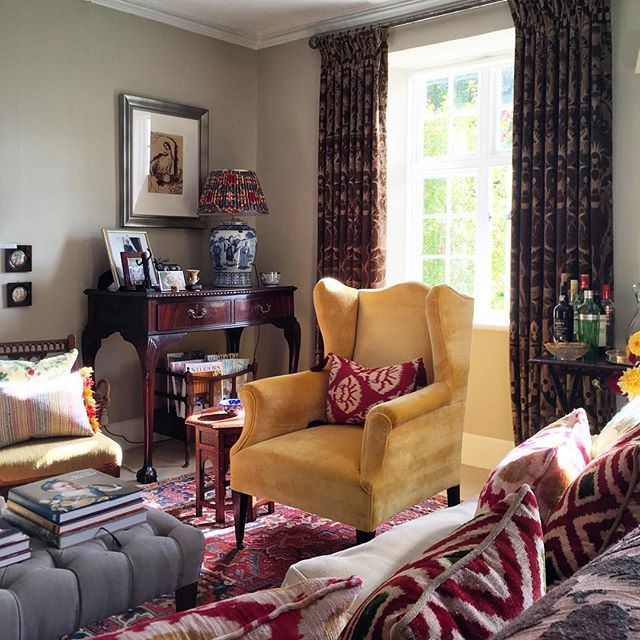 A slip is poured into the finished plaster mold - a diluted mass. Next, the product is baked at a high temperature. Such items can be replicated, there is nothing complicated in their manufacture. Difficulties arise when working from scratch. Creating the necessary shape, casting an object, firing - each stage can give an unpredictable result.
A slip is poured into the finished plaster mold - a diluted mass. Next, the product is baked at a high temperature. Such items can be replicated, there is nothing complicated in their manufacture. Difficulties arise when working from scratch. Creating the necessary shape, casting an object, firing - each stage can give an unpredictable result.
Porcelain can be molded like plasticine to make a unique author's item. This is more difficult because porcelain is less malleable and loses moisture quickly. Sometimes the casting technique is used in the work. It allows you to make an object or its elements translucent, thin and strong.
back
next
Works by Kira Kostina.
Source: Lili & Vava official website
It takes Kira from 3 weeks to 2 months to create one product. However, in the process itself there are stages when nothing depends on the master and he only needs to wait.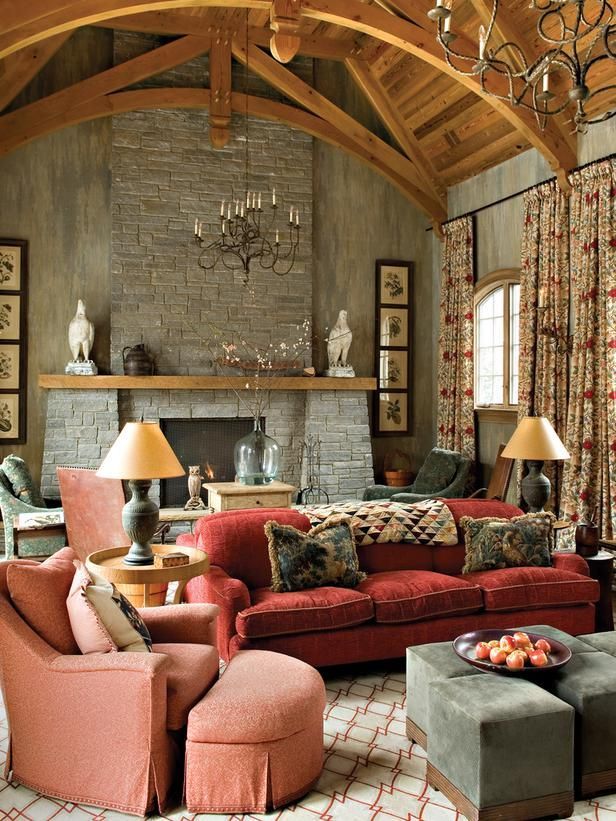 For example, firing in a kiln lasts at least a day. When creating complex objects, unexpected results can be obtained, so some processes have to be redone several times.
For example, firing in a kiln lasts at least a day. When creating complex objects, unexpected results can be obtained, so some processes have to be redone several times.
Porcelain is fashionable in ceramics. Now in the work of various masters there is a desire to create objects in the style of "destruction" (from the English. "Destruction"). These are works where many objects form one common, shapeless and "destroyed" one.
Another trend is to use "stupid". It is a cross between clay and glaze. Usually glaze is applied to the surface of the product and performs both a protective and decorative function. "Stupid" is applied in an excessively large amount, due to which the product turns out to be very voluminous.
Exhibition of Lili&Vava Decorative Art Lab gallery in Cube.Moscow.
Source: Lili & Vava official website
facebook-f Twitter Dribbble Behance
Author of the article
Behance
Facebook Twitter Dribbble Behance
simple ways of zoning — INMYROOM
Tips
If one room is not enough, and moving is impossible, it's time to think about how to transform the space without losing comfort
The need for privacy knows no conventions limited by square meters. And even if the apartment has only one room, it can perform several functions: to be a bedroom, a living room, an office and a nursery. The main thing is to correctly and harmoniously zone the space by combining various decorative and functional techniques. So you can create a single, but, at the same time, isolated space for its intended purpose.
And even if the apartment has only one room, it can perform several functions: to be a bedroom, a living room, an office and a nursery. The main thing is to correctly and harmoniously zone the space by combining various decorative and functional techniques. So you can create a single, but, at the same time, isolated space for its intended purpose.
1. Monolithic barrier
Drywall partition wall is an obvious and versatile choice for dividing a room into several parts. A blank wall is a controversial option, especially for a small room. But an arched structure or built-in shelving is a much more reasonable solution. Try to lighten the design as much as possible with the help of decorative windows, glass shelves and lighting. Don't be afraid to experiment with the shape, height, and location of the wall.
InMyRoom tip: thanks to the wide possibilities of drywall, the partition can become a real work of arts and crafts. Various built-in elements, such as an eco-fireplace or an aquarium, will make the interior unique.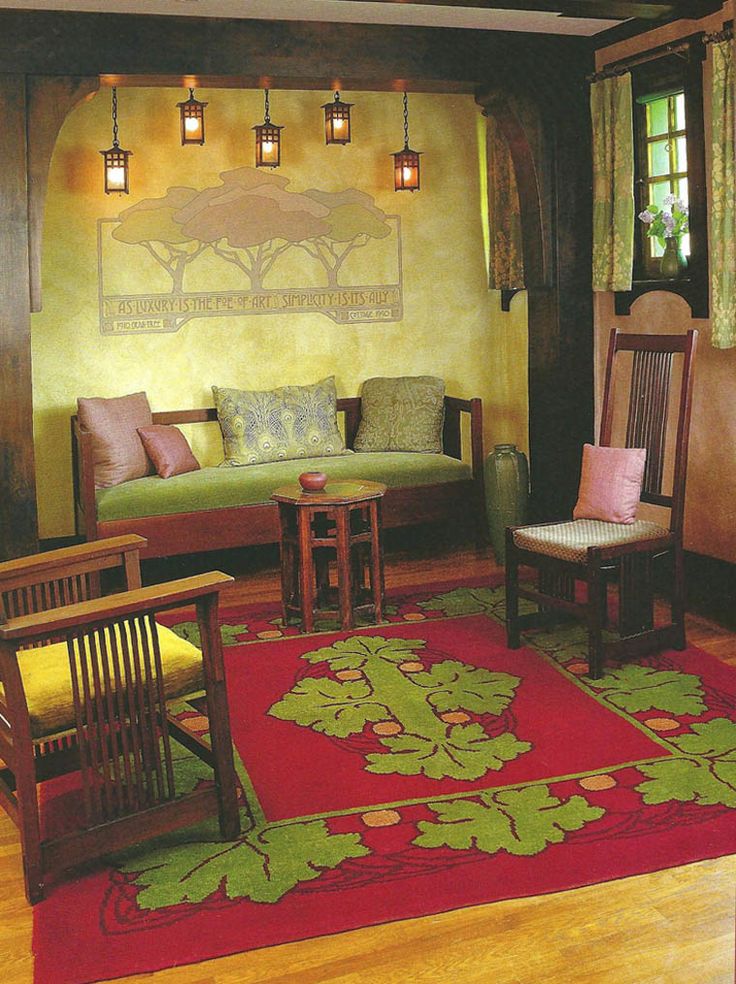
2. At different levels
To highlight the purpose of a particular zone in a room, it is not necessary to erect monolithic partitions, it is enough to change the floor level. Even a slight difference in height visually divides the room into several parts. A high podium under the bed can be not only a partition, but also an extra bed or a spacious drawer for storing pastel linen.
InMyRoom Tip: A clearer division of the room can be achieved by duplicating the difference in floor height with the same difference in the ceiling.
3. Curtain
A good way to quickly and without additional repairs to divide a room into several parts is to use tulle, thick cotton curtains or narrow curtains on a mobile rail. As a rule, with the help of a curtain, a bedroom and a living room are separated. The idea itself implies something intimate and personal, therefore it is especially appropriate and harmonious to fit into the design of the bed area and dressing room.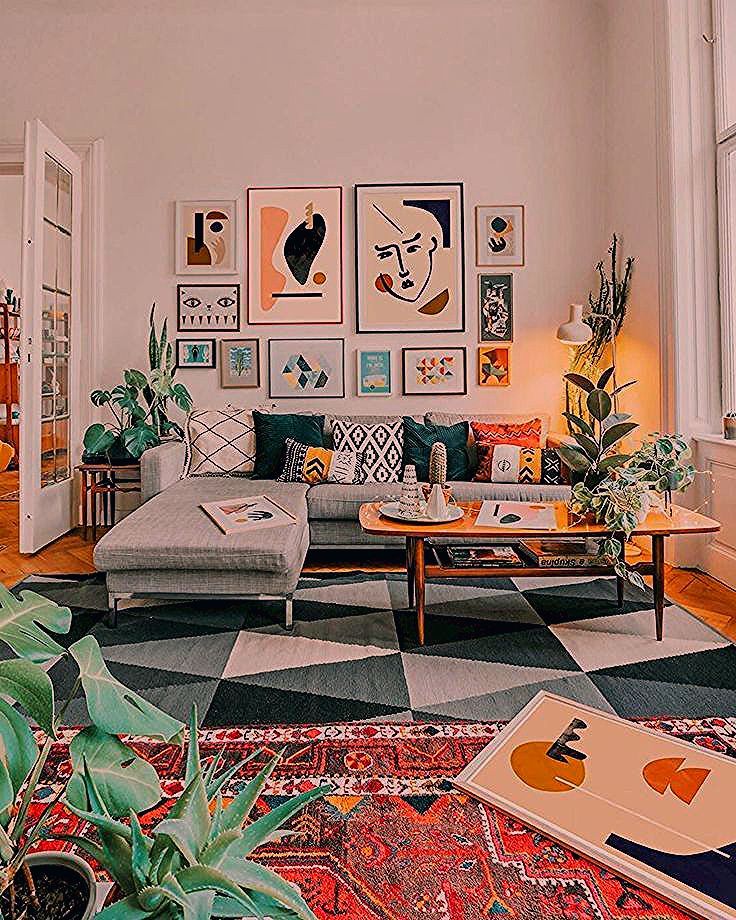
Tip from InMyRoom: Hang a canopy over the bed to emphasize the bedroom area and create a private atmosphere. The design can be the simplest - a ceiling cornice and a tulle thrown over it.
4. Color spot
If you value every centimeter, but you still need to divide the room, work with color. Different shades, textures and ornaments can zone a room quite effectively, and not a single square centimeter will be affected. In addition, thanks to correctly placed accents, you can hide an unsuccessful layout. The combination of different materials also guarantees an excellent effect. For example, a combination of painted walls in the living area and finely patterned wallpaper in the bedroom. You can combine paint with decorative plaster, wood trim and clinker tiles.
InMyRoom Tip: Don't use overly contrasting combinations, otherwise the room will look gaudy. Set the overall tone and choose accents in harmony with the leading color.
5.
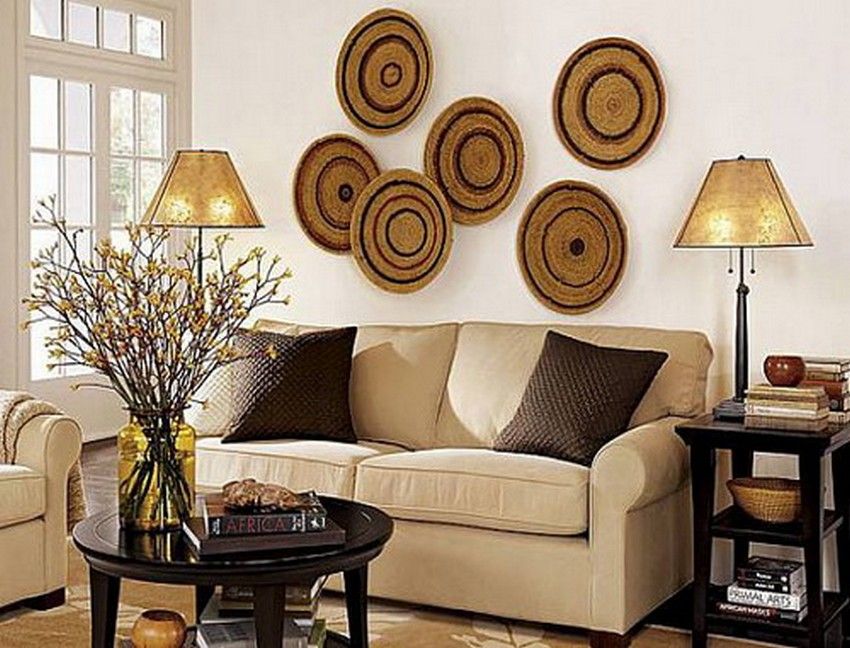 Two in one
Two in one Shelving units and sofas are the perfect helpers in zoning space. It is enough to rearrange and you get two rooms instead of one. And at the same time, no costs and dusty repairs. The rack can be of any height; choose open designs - they will more easily fit into the interior and will not overload the room. If you zone the room with a sofa, you can close the back with a rack or chest of drawers - you get a smooth transition and the sofa in the middle of the room will not catch your eye.
Tip from InMyRoom: So that the forced refusal of the bed does not affect the quality of your sleep, give preference to anatomical sofas. They are equipped with special orthopedic mattresses that support the spine physiologically correctly, and are equipped with spacious boxes for storing bedding.
6. Easy choice
Glass or plastic sliding doors will help create two completely isolated rooms. And at the same time without losing space and not burdening the interior at all.